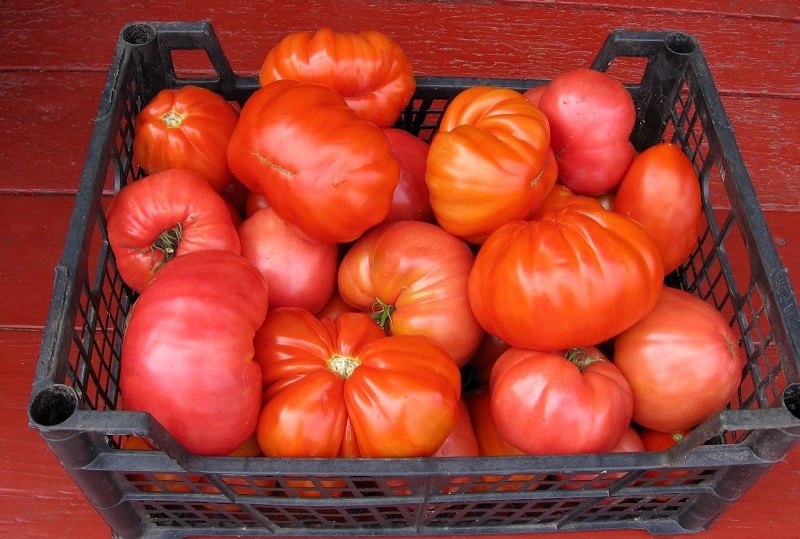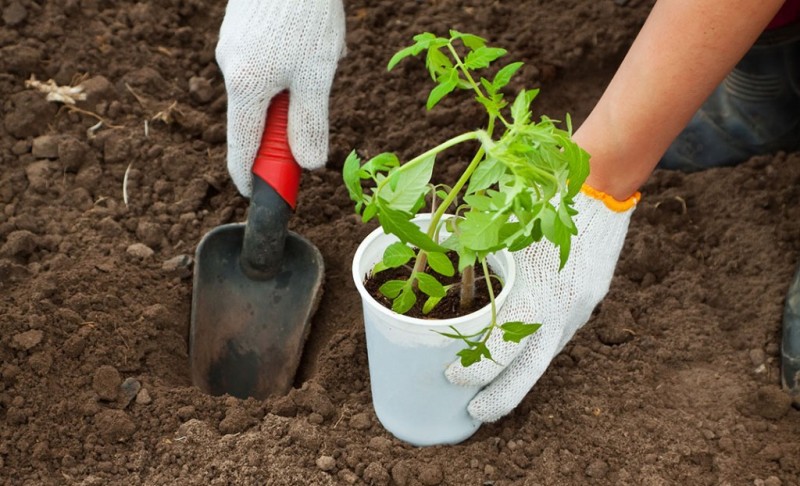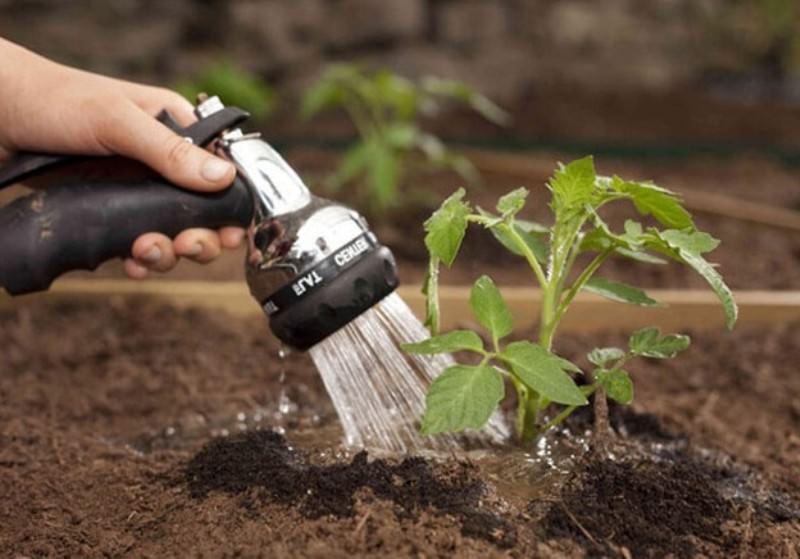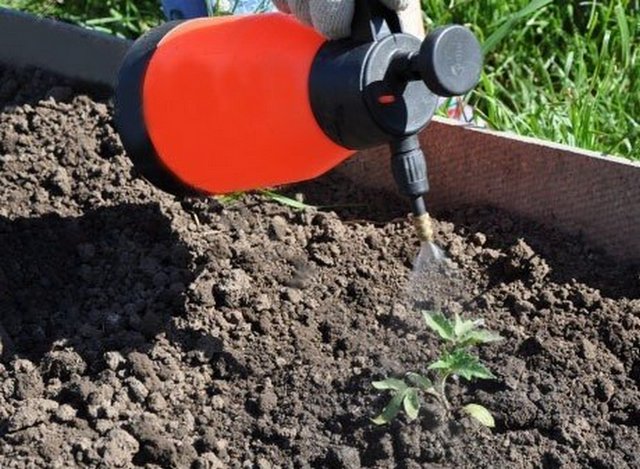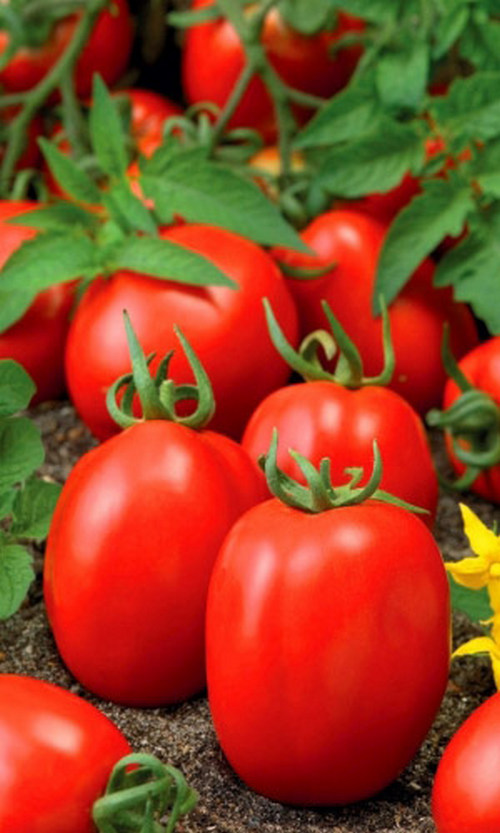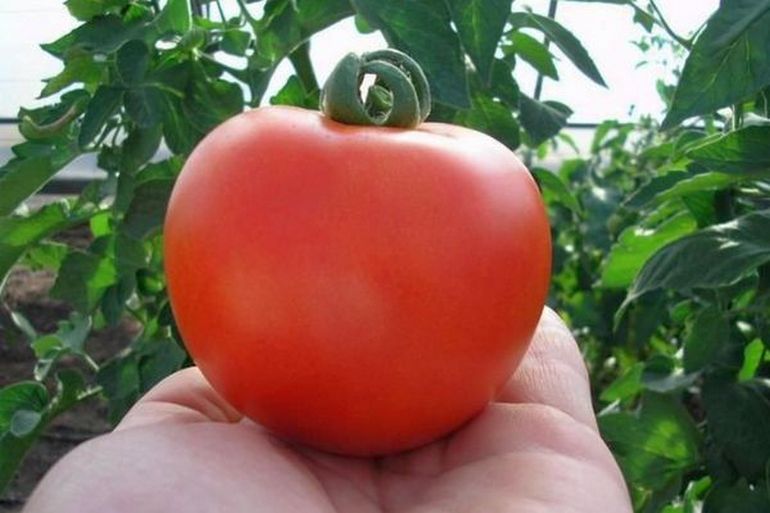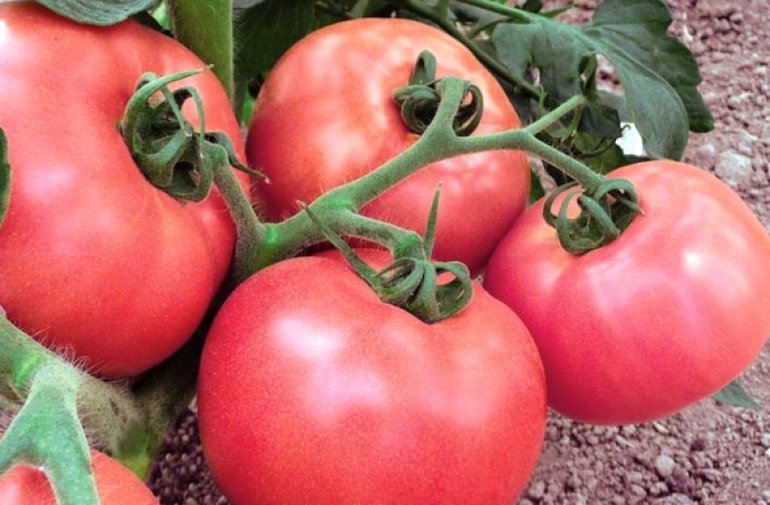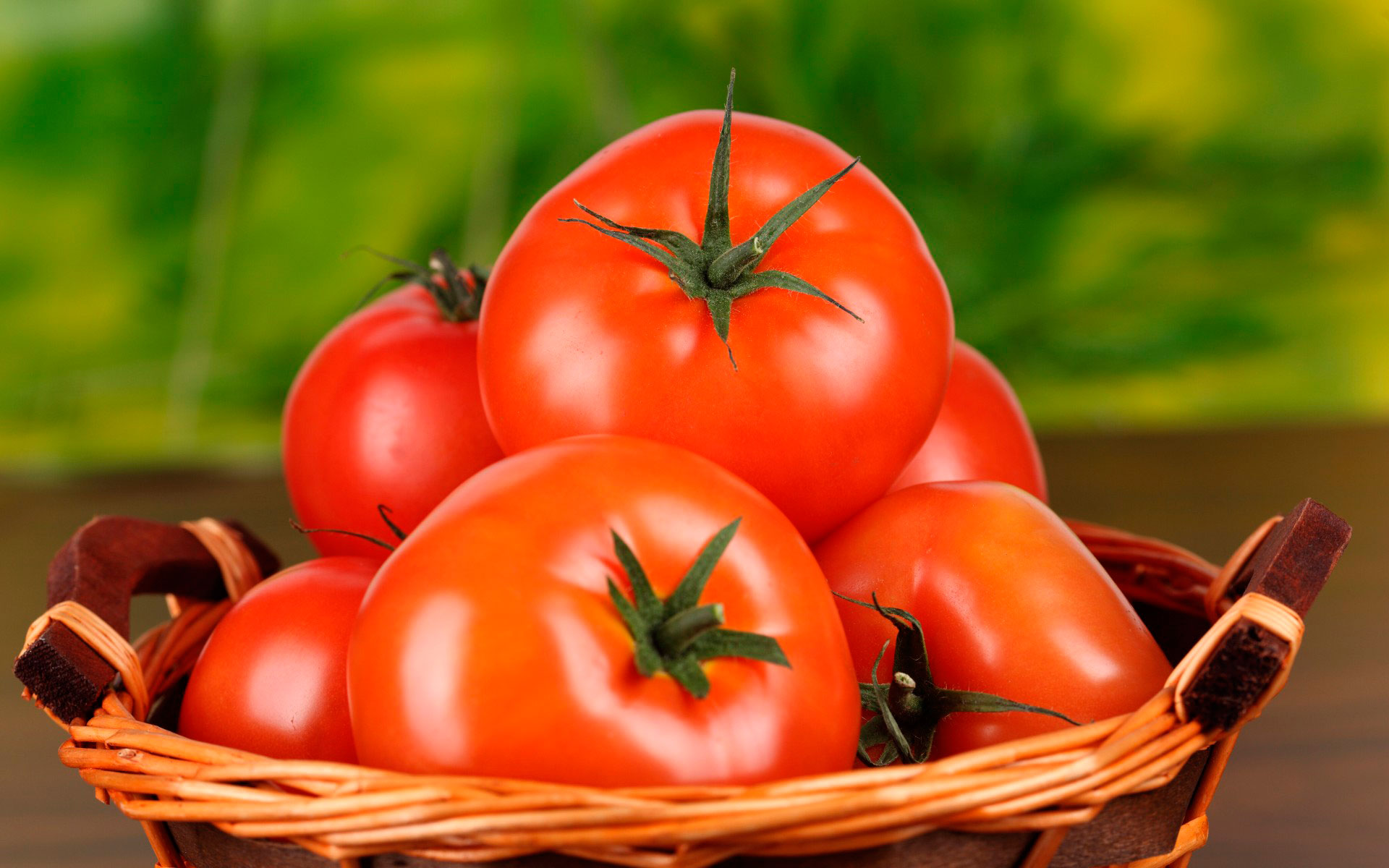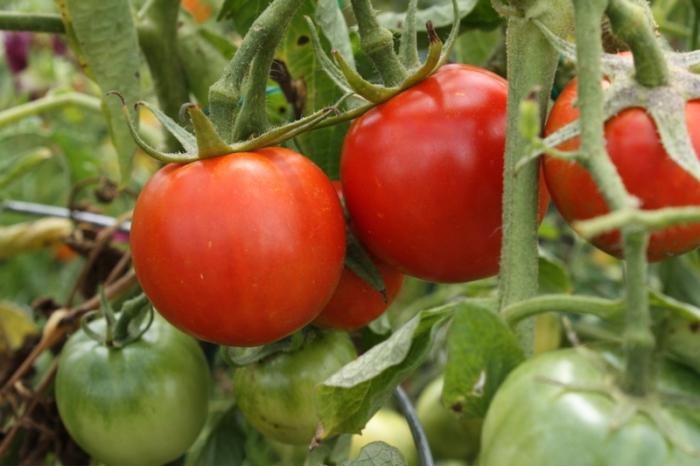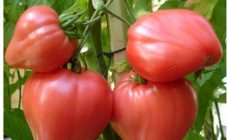Content:
Tomato 100 pounds is a medium early variety, high-yielding, rather large, undemanding, healthy and very tasty. It was bred by Russian breeders, in two thousand and thirteen it was entered into the State Register of Scientific Agricultural Achievements of Russia.
This is not the end of the enumeration of the remarkable characteristics of a one-stop tomato. It is suitable for growing in greenhouses and outdoors. It is preferable to plant in beds in regions with a warm climate. The plant is indeterminate, reaching two-meter growth in greenhouse conditions. Leaves, small in size, dark green, grows slightly on the bush. Fruits, ripening on clusters of 4-5 pieces, weigh from 170 to 300 grams. With their unusual shape, tomatoes are similar to pears, slightly flattened at the base and with ribbed barrels. Under a bright red thin but dense peel - sweet, slightly sour, juicy pulp, very pleasant to the taste. There are few seeds in tomatoes. But in 100 tomatoes there are many vitamins and sugars, but a small amount of calories.
Tomato Stopudovy characteristic and description of the variety
From the first day of germination to harvest, 110-120 days pass. In greenhouses, they grow up to two meters, and in the garden - up to one and a half. Tall vegetables require special care during development: tying not only the entire stem, but each branch. This must be done so that the tomato branches do not break under the weight of fruits, which are considered one of the largest representatives of the species. Excess greens on the bush should be torn off, especially the lower leaves, and pinched in time. If all these requirements are met, then fruiting will continue for a long time.
There are few leaves on the bushes, they are small. With proper adherence to agrotechnical rules for growing this species, you can get a wonderful harvest and collect up to 6 kilograms of fruit from the bush.
Rules for growing tomato varieties One hundred pounds
Seed and soil preparation
Seeds for planting are purchased in stores or from experienced gardeners who harvest them on their own. Before sowing, it is recommended to treat them with a light pink solution of potassium permanganate. Then dissolve two drops of Zircon in 100 milliliters of water and lower the seeds there to stimulate growth for 5-6 hours, after wrapping them in gauze.
Seed material prepared in this way must be sown in boxes or containers in order to grow seedlings. Deadline - late March or early April. You can get seedlings in a different way, that is, immediately plant the seeds in well-fertilized holes in greenhouses or hotbeds. The soil is prepared from a mixture of soil from the garden, humus, peat and wood ash, calcined in an oven at 200 degrees for half an hour.
Sowing seeds and taking care of seedlings
To obtain seedlings, sowing is carried out two months before transplanting it into a greenhouse or into open holes. Sow seeds in containers to a depth of 1 centimeter. Spray the soil with a spray bottle, cover with foil and remove to a warm place.After the first shoots appear, remove the film and put it in a well-lit place. Watering is carried out carefully from a watering can. When the first two leaves grow, the shoots need to be cut open, that is, planted less often. After picking, it is good to water it with an aqueous solution containing a complex of mineral fertilizers. This will be the first feeding of future tomatoes. One hundred pounds.
Planting
After two months, seedlings can be planted in a greenhouse, and in the south in early May - in open soil. If you take care of it correctly, then by mid-June you can enjoy the first fruits of your labor. It is not for nothing that the variety is considered mid-season.
Although the 100 pounds tomato variety is considered unpretentious and not picky, there are certain requirements for getting a decent harvest. These include proper watering and well-administered fertilizing.
Watering
Tomato bushes are watered only with warm water in the evening. This is the main condition for good growth, because they grow more slowly from cold moisture. If you water during the day, especially in hot sunny weather, then the young tender greens can be sunburned. The bushes are watered once a week, but abundantly. After each watering - obligatory root loosening, which will allow the roots to “breathe” and remove weeds.
Top dressing
The fertilization scheme is as follows:
- 1st top dressing - sowing seeds in containers;
- 2nd feeding - after diving (for 10 liters of water, 3 tablespoons of mullein, half a teaspoon of copper sulfate);
- 3rd feeding - 15 days after the pick (solution of 10 liters of water, a glass of mullein and a tablespoon of nitrophoska);
- 4th feeding - a month after the dive (dissolve a tablespoon of superphosphate and two tablespoons of wood ash in 10 liters of water);
- 5th feeding - correctional (weak elongated sprouts are watered with urea solution, and with active growth - with superphosphate solution);
- The 6th feeding corresponds to the time of planting the seedlings in the soil of greenhouses or greenhouses (half a liter of mullein per 10 liters of water).
Stepson and garter
In order for the seedlings to grow into full-fledged fruiting tomato bushes, you need, first of all, to form the future plant: leave 1-2 stems, and pluck or cut the rest. As it grows, remove the stepchildren so that the bushes become stronger, and the future fruits have time to ripen.
Remove the lower leaves every 10 days. If more than 3-4 flowers have appeared on the brush, the extra ones must be removed. This is due to the fact that the fruits grow large, and if there are a large number of vegetables, the twigs may not support their weight and break. Therefore, after planting the seedlings, you need to tie up the bushes, and when the fruits grow, then each branch.
Fight against diseases and harmful insects
The description of 100 pounds of tomatoes says that the variety is resistant to various infectious diseases. Despite this, annual events are needed to ensure the healthy growth and development of tomatoes. To do this, every spring in a greenhouse, greenhouse or in a garden bed where tomatoes will grow, renew the upper soil layer. Before planting seedlings, treat the soil with a solution of manganese or copper sulfate. Phytosporin will help to cope with fungal infections.
Preventive daily ventilation will also be good helpers in the fight against diseases.
Simple washing the bushes with a warm soapy solution with ammonia or celandine infusion (200 grams of dried plant, infused in 5 liters of hot water for 2 days) will help to cope with harmful insects.
Advantages and disadvantages
In the characteristics and description of the tomato variety One hundred pounds, there are many advantages:
- high productivity;
- wonderful taste, great benefits (the presence of carotene, lycopene, sugars in the composition);
- low calorie content (100 grams of tomatoes contain 20 kilocalories);
- good tolerance to temperature changes;
- long shelf life;
- sufficient unpretentiousness in care;
- persistent immunity to diseases;
- excellent transportability;
- versatility in use (use in the preparation of various dishes, preserves, except, perhaps, large fruits).
Tomatoes One hundred pounds can become the pride of every gardener. Dishes made from these fruits, sweetish in taste, with a subtle sourness, will decorate the table of any housewife. For those who want to lose extra pounds, tomato juice from tomato fruits One hundred pounds is just a godsend. Farmers also appreciated such varieties as "One hundred pounds", "Katyusha", "Moscow Lights", "Ogorodnik", "Sugar cream" and others for their ability to be stored for a long time during transportation.
